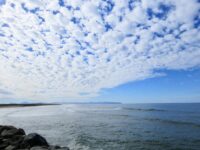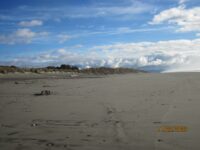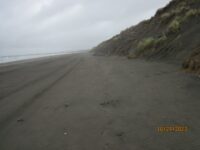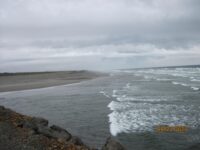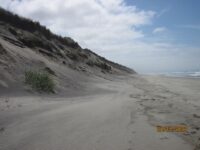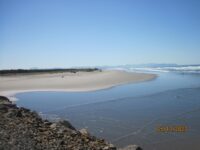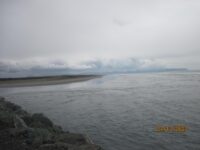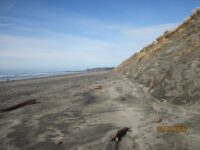Mile 340 Report
South Jetty Columbia River, Fort Stevens SP
November 22, 2023
Nothing unusual.
Report Details
Nothing unusual. Dunes are taking on a steep winter profile and formerly buried boulders are being exposed on the beach due to erosion. This area is undergoing significant erosion.
Conditions
Temperature: 55 F. Cloud Cover: Partly Cloudy. Wind Velocity: Calm/Light. Wind Direction: NW. Tide Level: -1.4 feet.
Human Activities
Number of people: 2. Number of dogs: 1. Walking or running: 2.
Vehicles
Notable Wildlife
Gulls
Driftline Content
Seaweeds and seagrass, Shells, Wood pieces, Styrofoam. Very little marine debris.
New Development
Bluff development. Dunes taking on steep winter profiles.
Natural Changes
Major cracks appearing in bluffs, Erosion of vegetated foredune, Visible retreat of solid bluff.
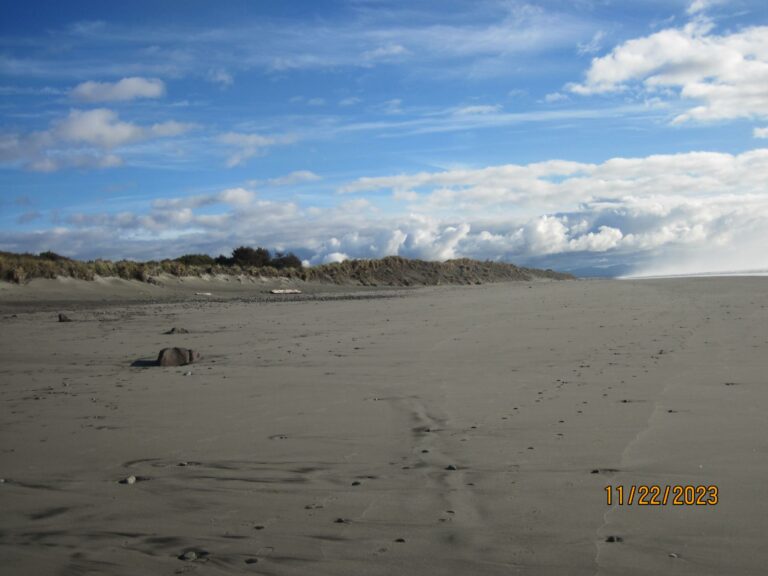
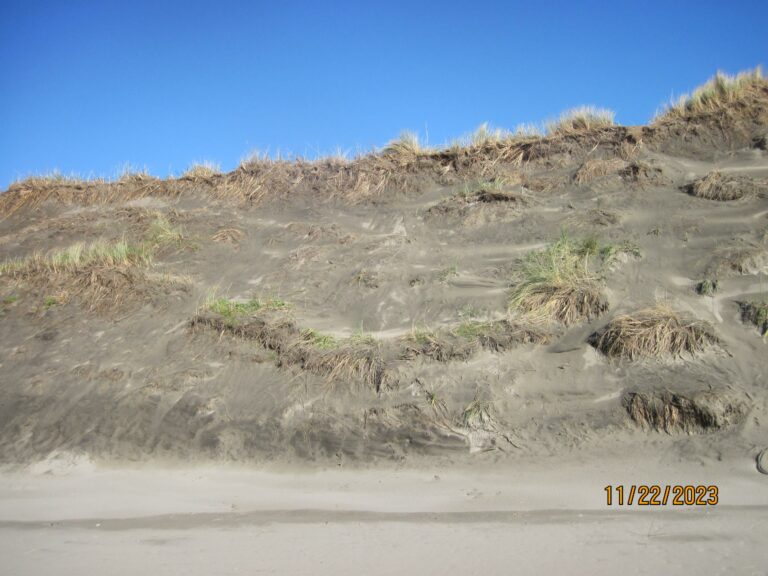
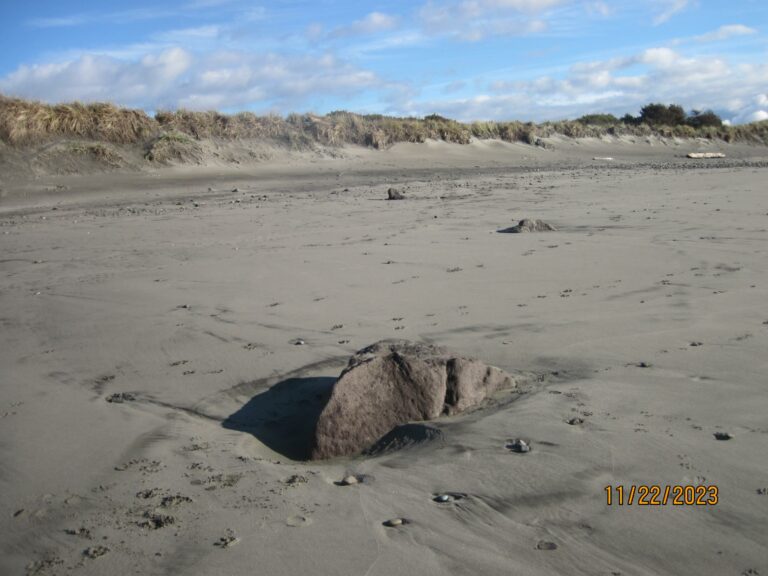
Report Images
All Mile 340 Reports
Mile 340
South Jetty Columbia River, Fort Stevens SP
This mile report was conducted to document notable wildlife offshore observed from the South Jetty/Parking Lot C area looking down onto mile 340 from the jetty.
sultanym
Mile 340
South Jetty Columbia River, Fort Stevens SP
Nothing important to note.
edjoyce
Mile 340
South Jetty Columbia River, Fort Stevens SP
Small amounts of marine debris were reported on NOAA's Marine Debris survey report.
edjoyce
Mile 340
South Jetty Columbia River, Fort Stevens SP
Dunes are taking on less steep slopes - see photos.
edjoyce
Mile 340
South Jetty Columbia River, Fort Stevens SP
Dead sea lion, which had been shot with a shot gun, and direct evidence of continued eastward migration of eroding dunes
edjoyce
Mile 340
South Jetty Columbia River, Fort Stevens SP
Steep dune faces typical for winter.
edjoyce

